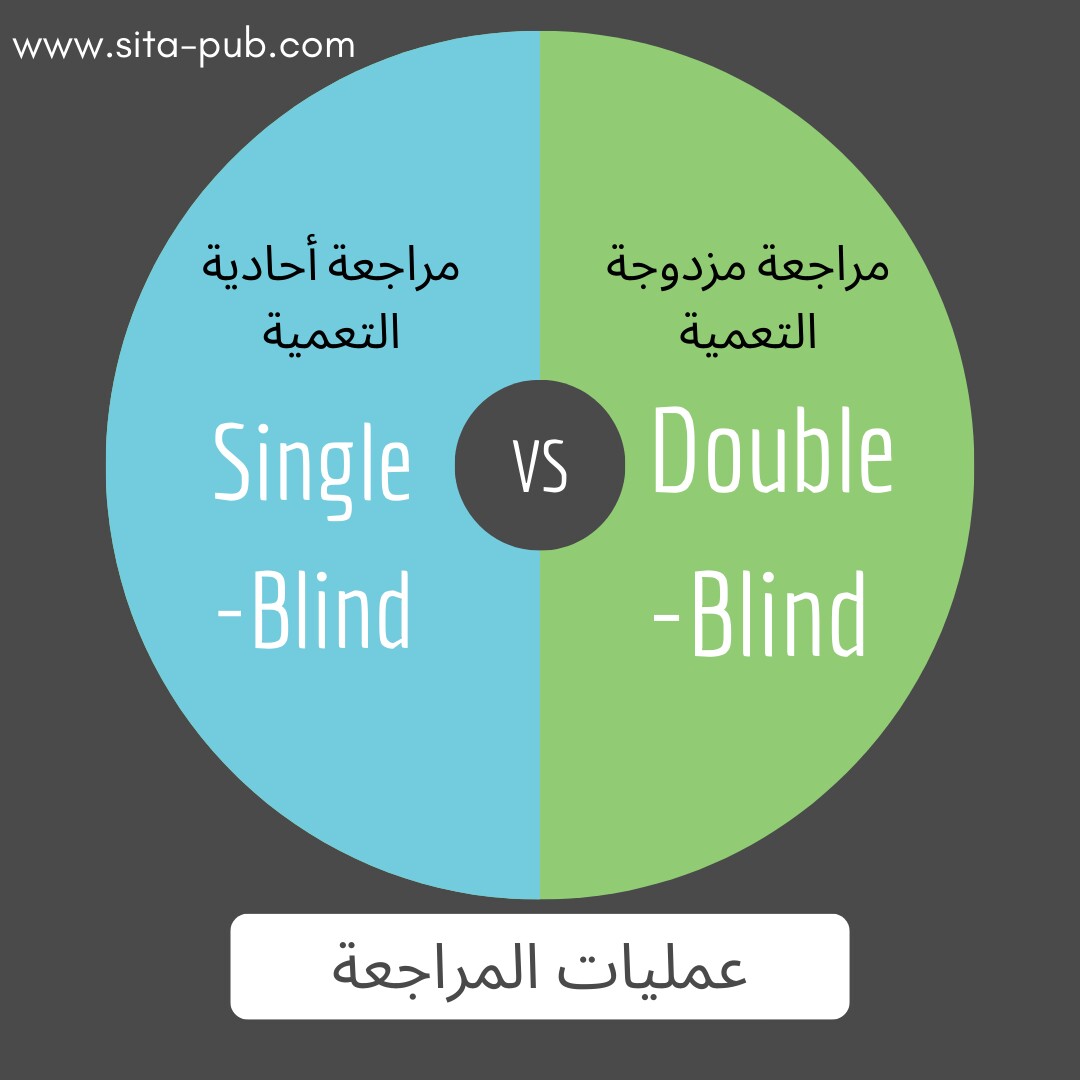المراجعه أحادیه التعمیه مقابل المراجعه مزدوجه التعمیه


عند تقدیم ورقه بحثیه للنشر، یُعد تحدید نوع عملیه مراجعه الأقران (Peer Review Process) قراراً مهماً: إما مراجعه أحادیه التعمیه (Single-Blind Review) أو مراجعه مزدوجه التعمیه (Double-Blind Review). لکل طریقه نقاط قوه وضعف خاصه بها، وفهم هذه الفروقات یمکن أن یساعدک على تحسین تجربتک فی النشر الأکادیمی.
فی المراجعه أحادیه التعمیه، یعرف المراجعون هویه المؤلفین، ولکن المؤلفین لا یعرفون هویه المراجعین. هذه الطریقه مستخدمه على نطاق واسع فی العدید من المجالات الأکادیمیه.

الشفافیه فی النشر: یمتلک المراجعون معلومات خلفیه عن المؤلفین، مما یساعدهم على تقدیم تغذیه راجعه أکثر دقه.
تعلیقات تفصیلیه: معرفه المؤلفین قد تشجع المراجعین على تقدیم ملاحظات محدده ومفیده، خاصهً للباحثین الجدد.
المساءله: قد یشعر المراجعون براحه أکبر فی تقدیم تقییمات صادقه بما أن هویاتهم تبقى مخفیه عن المؤلفین.

التحیز المحتمل: قد تتأثر أحکام المراجعین بآرائهم الشخصیه تجاه المؤلفین، مما یؤدی إلى تقییمات غیر عادله.
الخوف من الانتقام: قد یتردد المؤلفون فی تقدیم أبحاث جریئه أو مثیره للجدل إذا علموا أن المراجعین یعرفون أسماءهم.
التمییز فی التقدیر: قد یحصل الباحثون المعروفون على مراجعات أفضل بناءً على سمعتهم، بینما یُعامل المؤلفون الأقل شهره بإنصاف أقل.
فی المراجعه مزدوجه التعمیه، تظل هویات المؤلفین والمراجعین مجهوله للطرفین. تهدف هذه العملیه إلى تقلیل التحیز وضمان تقییم عادل للعمل البحثی.

تقلیل التحیز: تضمن السریه أن یستند التقییم إلى جوده العمل فقط، ولیس على من هم المؤلفون.
تشجیع العداله: یقل احتمال تأثر المراجعین بسمعه المؤلفین، مما یضمن تقییماً أکثر إنصافاً.
تعزیز النقد الصریح: یشعر المراجعون بحریه أکبر لتقدیم ملاحظات صریحه دون القلق بشأن معرفه المؤلفین لهویتهم.

صعوبه الحفاظ على السریه: قد یکون من الصعب إخفاء هویه المؤلفین، خاصه إذا کانوا معروفین أو إذا احتوى البحث على تفاصیل ممیزه تکشف عنهم.
نقص السیاق: قد یغیب عن المراجعین معلومات خلفیه مهمه عن أعمال المؤلفین السابقه مما قد یساعدهم فی تقییم البحث بدقه.
جهد إضافی على المؤلفین: یجب على المؤلفین بذل جهد لإزاله أی إشارات تکشف عن هویتهم مثل الإشارات الذاتیه والمعلومات التعریفیه.
یعتمد الاختیار بین المراجعه أحادیه التعمیه والمراجعه مزدوجه التعمیه غالباً على المجال الأکادیمی وسیاسات المجله المحدده. بعض النقاط التی ینبغی مراعاتها:
أعراف المجال: قد تفضل مجالات معینه طریقه على أخرى. فمثلاً، قد تفضل المجالات الأکادیمیه الراسخه المراجعه أحادیه التعمیه، بینما تفضل المجالات الناشئه المراجعه مزدوجه التعمیه.
سیاسات المجلات: تحدد العدید من المجلات طریقه المراجعه ضمن إرشادات التقدیم، وینبغی على المؤلفین الالتزام بها.
طبیعه البحث: إذا کان البحث مثیراً للجدل أو مبتکراً بشکل کبیر، فقد توفر المراجعه مزدوجه التعمیه بیئه أکثر أماناً لتلقی تعلیقات نزیهه.
اختیار نوع المراجعه جزء مهم من رحله النشر الأکادیمی. کل طریقه لها فوائدها وتحدیاتها. من خلال فهم هذه الفروقات، یمکن للمؤلفین اتخاذ قرارات أفضل تزید من فرص نجاحهم فی نشر أبحاثهم. الهدف هو ضمان عملیه مراجعه عادله وشامله تساهم فی نشر المعرفه فی مجالک.
فی أکادیمیه سیتا، ندرک أن اختیار المجله المناسبه لبحثک قد یکون تحدیاً. فریق خبرائنا جاهز لدعمک طوال عملیه النشر، لمساعدتک فی اختیار الخیار الأنسب الذی یتوافق مع طبیعه عملک وأهدافک. نحن ملتزمون بمرافقتک فی کل خطوه.
إذا کان لدیک أی أسئله، استفسارات، أو ترغب فی معرفه المزید عن خدماتنا، فلا تتردد فی التواصل معنا. فریقنا المخصص مستعد لمساعدتک.